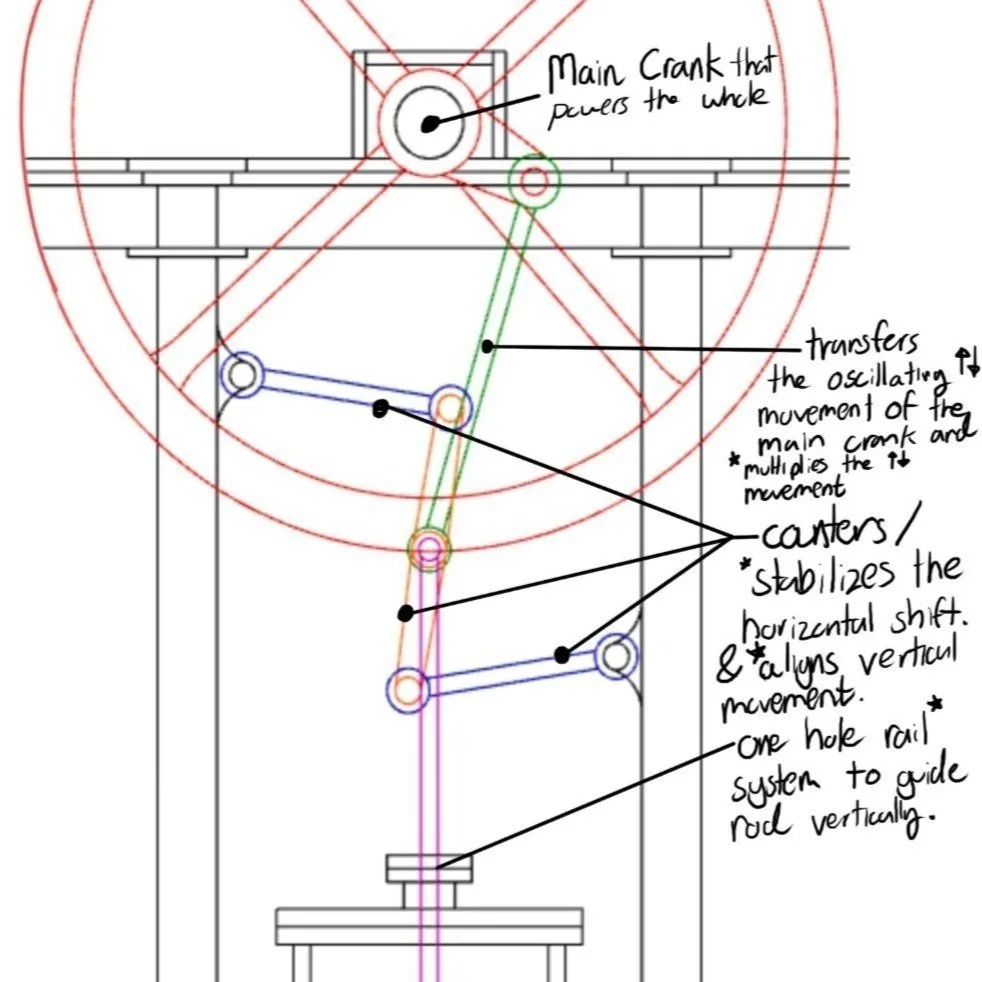“I made a
Useless Stamper
Because— Nothing is useless.”
Project Overview
During this 2.5-week project, I explored mechanisms from initial study to final fabrication. I began with thorough research and focused on designing a mechanism that ingeniously translates the bodily force of stamping into an intriguing mechanical experience, centered around the mundane activity of stamping.
Technical Skills:
WOOD WORK
Mortiser (Railing, Precise Hole Placement)
Drill Press (Precise hole depths)
Table Saw (Dado Grooves & Jigs)
Festool DF 500 (Domino Joints)
Universal Laser System (Sketch Models)
3D PRINTING
Rhino 8 (Visualization & Parts)
Tolerance Testing (Tight, Snug, Loose Fit)
Bed Z-Axis Offsetting (Troubleshooting)
VERTICAL OSCILLATING MECHANISMS
MECHANISM #1
CONS
Extensive Loss of Mechanical Energy & Brittle Gears— Bevel Gears Might Work
MECHANISM #2
PROS
Stable & Fluid Movement & Continuous
CAD VISUALIZATION
Cad Drawing — Every component was an original design.
Cad Drawing — Every component was an original design.
PROCESS OF MAKING
3D PRINTING
Main Gears
Crawler Conveyer Belt
Stamping Head
Hand Crank
Mechanism Arm: Loose Fit in the center shoulder
Main rails to guide stamping arms
Crankshaft with a clampable crankpin adaptor for metal rod and bearing cavity
Metal Rod: Tight Fit
Bearing: Tight Fit
TOLERANCE TESTING
Precise holes for metal rods
RIGHT: Motor Housing
Dado to cut rails
Locking Pin
ASSEMBLY
LEFT: Crank shift axis
Metal Rod: Tight Fit
Mechanism Analysis
Analyzed two downward moving mechanism, identifying their functionality & drawbacks. Subsequently I optimized and enhanced the appropriate mechanism by integrating a crawler bet assembly, to visually showcase the human action of stamping in a more fascinating and efficient manner.






















